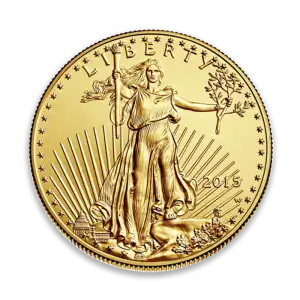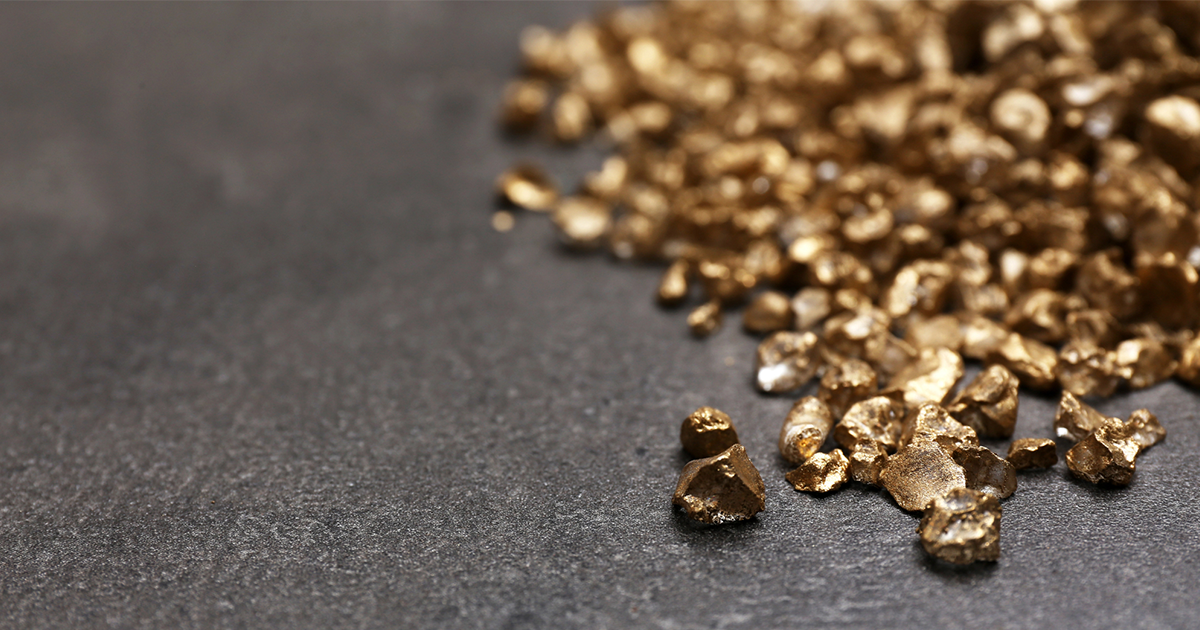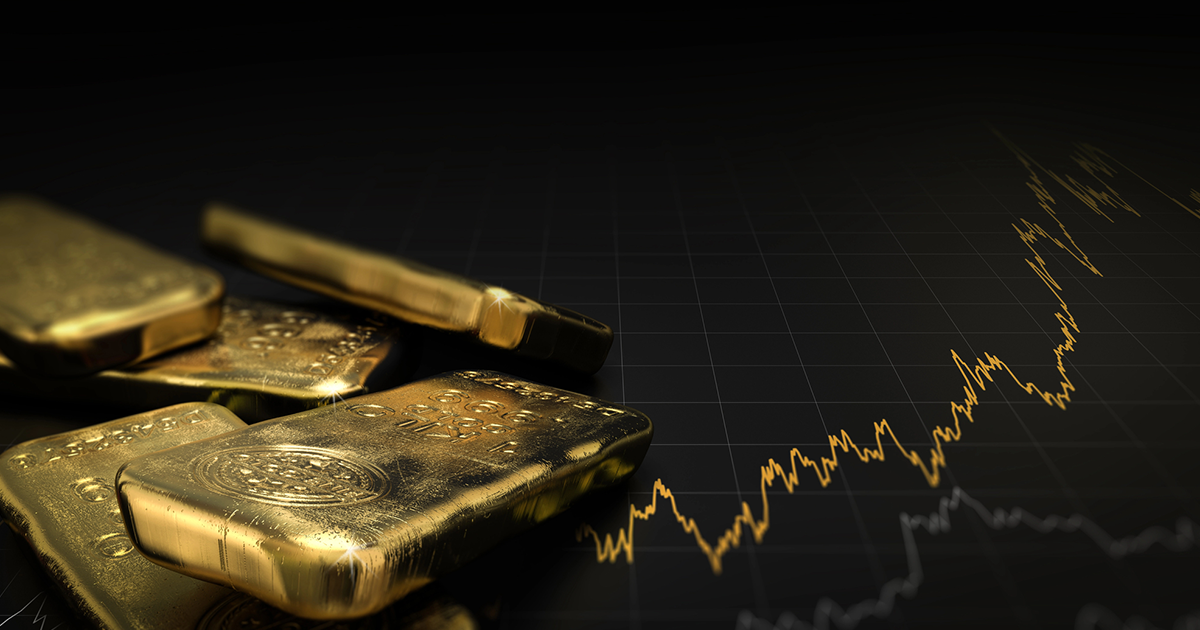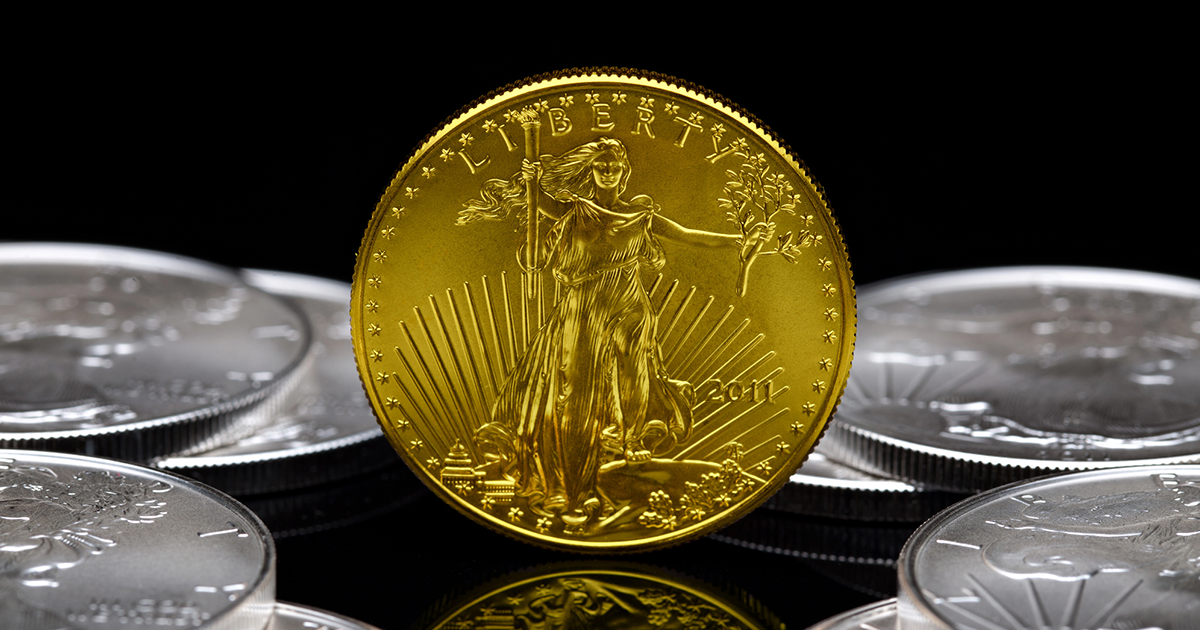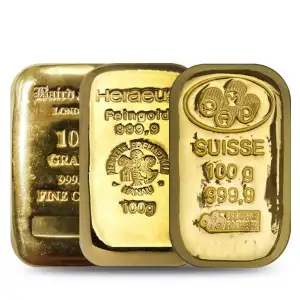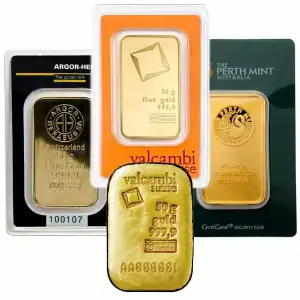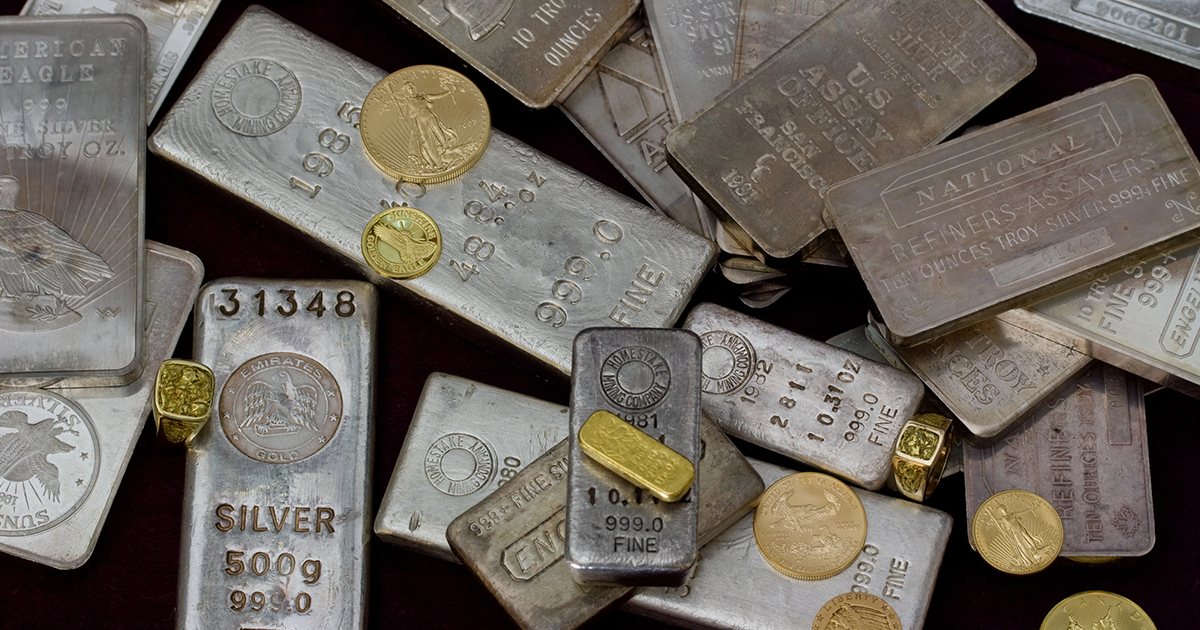
Diversify Within Precious Metals for Long-Term Value
In times of market volatility and economic uncertainty, investors increasingly turn to precious metals as a stable and tangible store of wealth. Whether you’re looking to preserve capital, hedge against inflation, or add diversity to your investment strategy, understanding how to build a bullion portfolio is key. Precious metals can help stabilize portfolios and offer protection against market volatility, making them an essential component of portfolio diversification.
In this guide, we’ll explore how to strategically build and diversify your holdings across gold, silver, and platinum - three of the most popular precious metals on the market today. Investing in these metals offers unique advantages, such as their historical performance and low correlation with other asset classes.
Bullion Investment
Bullion investment is a popular way to diversify an investment portfolio with precious metals. Investing in physical gold, silver, platinum, and palladium can provide a safety net during market fluctuations and economic uncertainty. Bullion coins and bars are popular choices for investors due to their ease of purchase and ability to strengthen one’s store of wealth. When investing in bullion, it’s essential to understand the current spot price of the precious metals and the market trends. Precious metals like gold, silver, and platinum have intrinsic value and are not tied to any currency, making them a reliable asset during times of economic uncertainty.
Why Invest in Precious Metals?
Precious metals, including gold bullion, have long held a reputation for safeguarding wealth across centuries due to their role as a stable store of value. Here’s why they remain a core part of a resilient investment strategy:
- Inflation Hedge – Gold and silver tend to retain or increase their value when fiat currencies decline.
- Tangible Asset – Unlike stocks or digital currencies, bullion is a real, physical asset you can hold.
- Global Demand – Precious metals are recognized and valued worldwide.
- Gold Coins – Gold coins offer liquidity and global recognition, making them an attractive investment for both novice and experienced investors.
- Low Correlation – Metals often move independently from the stock market, making them ideal for diversification within investment portfolios.
Precious metals are a distinct asset class with unique characteristics and benefits, enhancing portfolio diversification and risk management.
Understanding Your Options: Gold, Silver, and Platinum
When it comes to diversification, each metal has unique properties and market behavior:
- Gold: Gold is often seen as a safe-haven asset. It is highly liquid and can be easily bought or sold in various forms, including coins, ETFs, and gold bars. Gold bars are a significant component of investing in physical gold, offering the benefits of tangible assets, secure storage, and potential long-term appreciation.
- Silver: Silver is more volatile than gold, which can offer strong upside potential. Price movements in silver can be significant, influenced by supply and demand, market volatility, and external uncertainties.
- Platinum: Platinum is rarer than gold and silver and has various industrial applications. Interest rates can influence the attractiveness and pricing of platinum, as lower rates can increase demand by reducing the opportunity cost of holding the metal.
Understanding precious metal prices and their fluctuations due to geopolitical events and market conditions is crucial for making informed investment decisions.
Gold
- Most stable and widely traded.
- Strong hedge against inflation and currency devaluation.
- Popular in both bar and coin form.
- Gold holdings can be accessed through physical metals exchange-traded funds (ETFs), making it easier for investors to include gold in their asset allocation strategies.
- When you buy gold, consider the various methods and strategic investment considerations. Gold can be purchased in physical forms like bars and coins, or through investment vehicles such as ETFs. Be aware of potential challenges like markups, storage security, and resale considerations.
Silver
- More affordable entry point, making it suitable for those with smaller budgets.
- Volatile but offers strong upside potential.
- Significant industrial demand (tech, solar, medical).
- Silver coins provide a tangible investment option that serves as a hedge against economic instability and offers potential for growth, making them an excellent choice for portfolio diversification.
Platinum
- Rarer than gold and silver.
- Used heavily in automotive and industrial sectors.
- More speculative, ideal for experienced investors seeking growth.
- Critical in automotive manufacturing for producing vehicular catalytic converters, which are essential for reducing emissions and maintaining consistent demand.
Tip: Don’t overlook platinum—it can add a unique edge to a balanced portfolio. Incorporating platinum into your investment strategies can enhance portfolio robustness and offer potential high returns, especially in response to economic fluctuations.
Key Factors to Consider Before You Start
Before purchasing your first bullion asset, reflect on the following:
- Investment Objectives – Are you preserving wealth, speculating, or preparing for future inflation? Understanding your investment objectives is crucial for making informed decisions.
- Risk Tolerance – Gold is stable; silver and platinum are more volatile.
- Budget – Decide your overall investment amount and how to allocate it among metals.
- Secure Storage – Will you use a home safe, bank deposit box, or professional allocated storage like The Bullion Bank Vault? Secure storage options are essential to safeguard your investments from theft or damage.
Exchange Traded Funds
Exchange-traded funds (ETFs) provide an easy way to diversify a portfolio with precious metals without dealing with physical assets. ETFs track the prices of metals like gold, silver, platinum, and palladium, offering liquidity and convenience. Investing in ETFs can provide a hedge against economic uncertainty and market volatility. ETFs have lower costs compared to owning physical metals, and they can be easily bought or sold as needed. Precious metal ETFs can streamline the investment process while adding a layer of diversification and stability to a portfolio. By investing in ETFs, investors can gain exposure to the precious metals market without the need for physical storage or insurance costs.
Mining Stocks
Investing in mining stocks can provide a unique diversification benefit to a portfolio. Mining companies, such as junior miners and major miners, offer exposure to the precious metals market through their operations. The theory behind buying mining stocks is that if the price of the precious metal goes up, the profit margins of the companies potentially go up as well. However, factors like geopolitics, cost of energy and labor, and corporate governance can impact the profitability of individual mining firms. It’s essential to do research before investing in mining stocks, especially if you’re a beginner. Mining stocks can offer growth potential and a way to invest in the precious metals market without directly buying physical metals.
Step-by-Step: How to Build a Bullion Portfolio
Here’s a simple process to get you started:
First, understand how bullion can complement other investments like stocks and bonds. Begin by researching the different types of bullion available, such as gold, silver, platinum, and palladium. Each metal has its own unique properties and market dynamics, so it's important to understand these before making any purchases.
Next, decide on the allocation of each metal in your portfolio. A well-diversified bullion portfolio can help mitigate risks and take advantage of different market conditions. For example, gold is often seen as a safe-haven asset during economic downturns, while silver has more industrial uses and can benefit from economic growth.
Finally, consider the form in which you want to hold your bullion. Options include coins, bars, and exchange-traded products (ETPs). Each form has its own advantages and disadvantages, so choose the one that best fits your investment goals and storage capabilities.
Diversifying investments in various metals can enhance the overall stability of your portfolio, providing a reliable asset for mitigating risk during economic uncertainty.
1. Set Your Allocation
Decide how much to invest in each metal. Adding precious metals like gold and silver to your portfolio is crucial for enhancing and diversifying your investments. For example:
- 60% Gold
- 30% Silver
- 10% Platinum
Adjust based on your risk profile. Including individual precious metals in a diversified portfolio can mitigate risks and enhance overall performance due to their distinct market behaviors and low correlations with traditional asset classes.
2. Choose Your Formats
- Coins – Legal tender, highly liquid (e.g., Gold Maple Leaf, American Eagle). Gold coins are particularly beneficial for their liquidity and global recognition, making them an attractive option for both novice and experienced investors.
- Bars – Lower premiums per ounce; better for large investments. Gold investing can also include bars, which are ideal for those looking to make substantial investments.
- Rounds – Privately minted, often with collectible value.
3. Buy in Stages
Avoid putting all your capital in at once. Understanding the current market price is crucial when making purchases. Use dollar-cost averaging to spread your purchases over time. Price movements, influenced by geopolitical events and market volatility, can significantly impact the timing of your purchases.
4. Rebalance Periodically
Market values shift. Review and rebalance your precious metals portfolio annually to maintain a balanced allocation.
Rebalancing can enhance your portfolio's resilience against market fluctuations.
Risk Management
Risk management is crucial when investing in precious metals. Market volatility and economic uncertainty can impact the value of precious metals, and it’s essential to have a strategy in place to manage risk. Diversifying a portfolio with different assets, such as stocks, bonds, and precious metals, can help reduce risk. Investing in precious metals can provide a hedge against inflation and market downturns, but it’s essential to understand the risks involved. By investing in a diversified portfolio, investors can enhance stability and reduce the risk of losses. Risk management strategies, such as stop-loss orders and position sizing, can also be used to manage risk when investing in precious metals.
Market Trends
Market trends play a significant role in the precious metals market. Understanding market trends and fluctuations can help investors make informed decisions. The price of precious metals can be impacted by various factors, such as supply and demand, economic conditions, and geopolitical events. By staying up-to-date with market trends and news, investors can gain insights into the precious metals market and make informed investment decisions. Market trends can also be used to identify opportunities and potential risks in the precious metals market. Investors can use technical analysis and fundamental analysis to understand market trends and make informed decisions. By investing in precious metals, investors can potentially benefit from market trends and fluctuations, but it’s essential to have a solid understanding of the market and the risks involved.
Tips to Diversify Within Precious Metals
Diversification doesn’t stop at just owning different metals. Try these approaches:
- Mix Sizes – Combine 1 oz coins, 10 oz bars, and fractional pieces for flexibility.
- Blend Sovereign and Private Mint Products – Sovereign coins (e.g., Krugerrands) offer government backing, while private bars may offer better value.
- Explore Global Options – Australian, Canadian, and British bullion options provide international recognition.
- Consider Numismatic or Semi-Numismatic Pieces – Some coins may appreciate due to rarity and demand.
- Look at Other Metals – Diversifying beyond gold and silver to include other metals can enhance financial growth and stability. Each metal offers unique benefits and investment characteristics.
- Silver's Industrial Applications – Silver's dynamic pricing and demand are influenced by its critical role in renewable energy technologies like solar energy. Its broad usage in various industries makes it more volatile compared to gold, presenting unique investment opportunities tied to industrial demand.
Avoiding Common Mistakes
Even experienced investors can fall into these traps:
- Overloading on One Metal – Putting 100% into gold might miss silver’s or platinum’s upside.
- Ignoring Liquidity – Some large bars are harder to sell quickly. Paper assets, such as ETFs, futures contracts, and mining stocks, provide liquidity and ease of trade but depend on market stability.
- Buying From Unverified Sources – Always purchase from reputable dealers like The Bullion Bank.
- Neglecting Storage – Failing to secure your investment can lead to loss or theft.
- Investing in Mutual Funds – Mutual funds eliminate the need for physical storage and offer a convenient option for investors. However, management fees associated with these funds may impact overall investment returns.
Why Choose The Bullion Bank?
At The Bullion Bank, we don’t just sell metals - we help you build lasting wealth. Here’s why investors trust us:
- Verified Authenticity – All products are sourced from trusted mints and refiners.
- Secure Vault Storage – Hassle-free, insured storage options for peace of mind, ensuring secure storage to protect your investments from market volatility and potential theft or damage.
- Expert Guidance – Personalized advice for building your ideal bullion portfolio, offering expert guidance to help you make informed investment decisions.
- Transparent Pricing – No hidden fees, competitive premiums.
Browse Our Gold Collection | Explore Silver Options | Discover Platinum
Final Thoughts
Building a successful bullion portfolio is about balance, patience, and strategy. By diversifying across gold, silver, and platinum - and investing gradually and intentionally - you create a foundation of financial strength. Additionally, understanding the historical significance of precious metals as a store of value can further enhance your investment strategy.
Ready to take the next step?
Talk to a Bullion Specialist Today and begin building your portfolio with confidence. The correlation between the global economy and the demand for precious metals underscores their attractiveness as a hedge against market fluctuations.
FAQ
Q:How much bullion should I own?
A:A common rule of thumb is 5–15% of your total investment portfolio, depending on your goals.
Q:Is platinum a good investment for beginners?
A:It can be, but its price is more volatile. Many start with gold and silver, then branch into platinum.
Q:What’s the best format to buy: coins or bars?
A:Coins offer liquidity and recognizability. Bars often have lower premiums. A mix of both is ideal.

